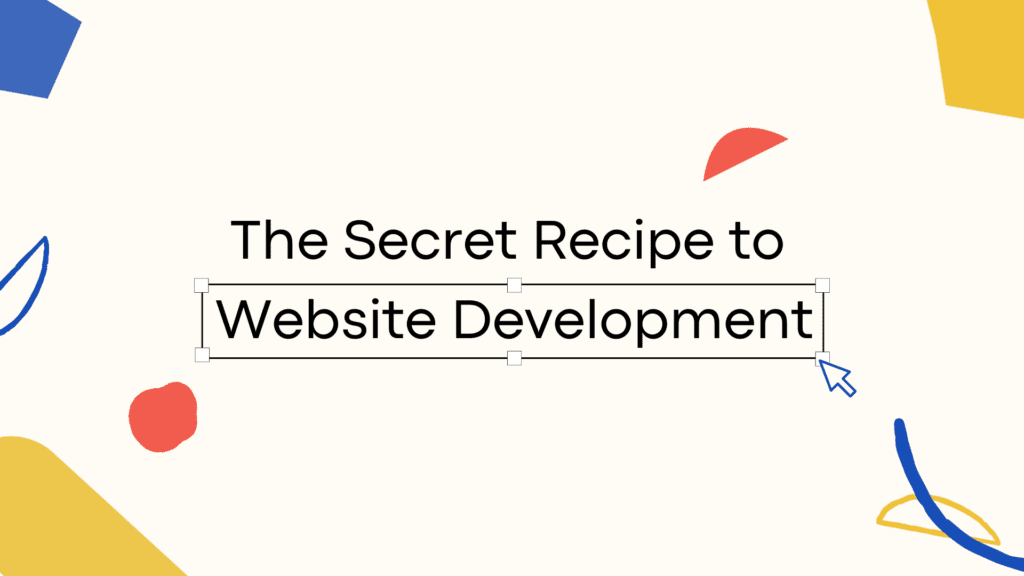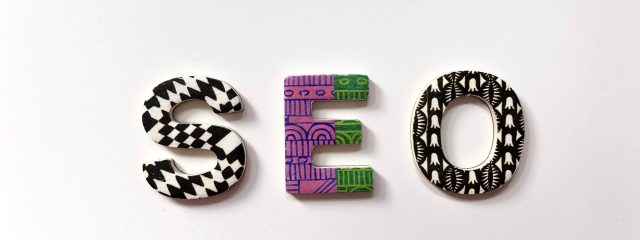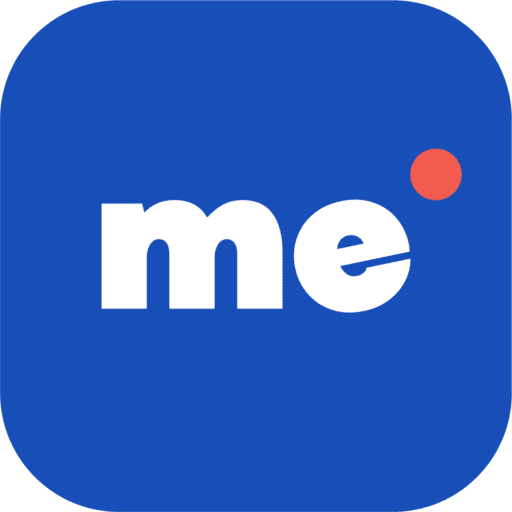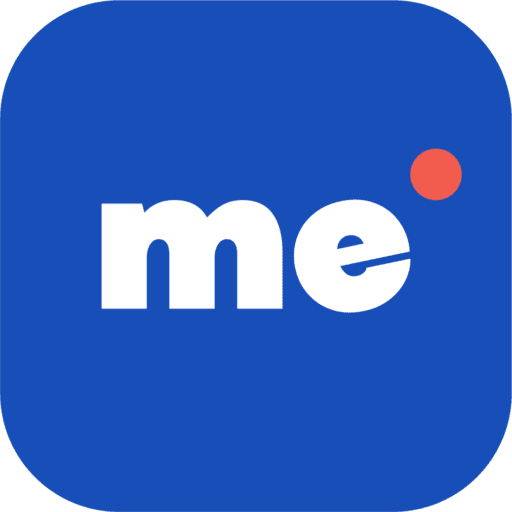

Tricia Lim
Social Media Content:
the Good vs. the Bad



Tricia Lim
Websites. We’ve all heard of them; we surf the web and consume its content. We’ve been impressed by some really engaging and memorable ones, and on the flip side, we’ve also been dissatisfied by some tacky or poorly designed websites.
Today, we live in a ‘search’ era, an era where we instinctively turn to our devices and Google to get quick information to make quick decisions. That’s why so many companies need to have a strong online presence. It reinforces your brand, your offerings, and your relationships with your target audience.
That’s why having a great website is essential to your company’s success.
In fact, it’s as crucial to a business as having a shop, office or phone number. For example, 50% of people prefer to search for a company online before doing business with. Another research has found that 6/10 customers expect brands to have content online about their business.
Now… Imagine losing 50% of those customers! That’s a lot of potential wasted.
Okay, now that we’ve covered why you NEED a website, we can dive into the reason for this entire piece: how does one build a successful website?
Well, lucky for you, in this article, we’ll be sharing some of our trade secrets – secrets that brought our clients success! So here are some of the key ingredients that go into our’ secret recipe’ of building an effective website.
Table of Contents
1. Research and determine what type of website suits you best
Before jumping into the technicalities of building a website, it’s essential to start thinking about what kind of website you want first. What are the goals for your website, and who your target audience is? Do you plan to grow profits from this website? Or do you simply want to share thought pieces and recipes like a blog? Whatever your ultimate goal is, it should be reflected in your choice of site. This way, you’ll learn to understand what your website needs and what elements it should contain. Given that the most popular types of websites are: e-commerce sites, blogs, and online portfolios, consider if that’s something you or your organization is interested in.


2. Start with a simple site map
Assuming that you’ve already got an idea of what purpose your website will serve and the goals and objectives behind it, it’s also important to visualize and plan out what the site will look like.
You could start your site plan by mapping out the pages you want in your navigation menu or where your subpages will go.
When you plan out the whole website, from structure to content, it’ll help you decide what you need and what you don’t. Plus, it’s great for understanding user experiences!
3. Choosing a website platform, domain name, and host
In the past, web development seemed far-fetched and difficult for us folk who didn’t know better about coding languages, and so on. It’s time-consuming to learn and difficult to master.
Nowadays, unless you’re a master at CSS and HTML coding, content management systems (CMS) like WordPress and Wix are an accessible platform for you to create your own website.
In essence, a CMS is a user-friendly platform for building websites and managing your own online content, rather than creating it from scratch using HTML, PHP and other coding languages.
These are some of the popular website platforms or builders of 2021:
Our team uses WordPress as our preferred platform for website building since it’s easy to use, plugin friendly and cost-effective. However, it’s important to note that each platform has its own pros and cons, so it’s best to weigh those out to see if it’s a right fit for you.
Next up is choosing a domain name and host. This may sound a little confusing, but a domain name is essentially the web address of your site.
We highly recommend getting a unique domain name so that people can easily find and remember your site. Just take Google as an example. When you want to search for information, your go-to would be google.com! That’s part and parcel of why they’re so successful at what they do–people have no difficulty recalling their site or name.
Another reason for having a unique domain name is to maintain professionalism. Imagine yourcompany.free-domains.com; it doesn’t really have a nice ring to it, does it?
On the other hand, web hosting is simply where your site lives online. All websites require servers to keep them up and running, available when people search for them. Having a quality hosting service provider also helps you with fast load times and prevents your website from going down.
These are some of the popular web hosting service providers:
You can also check out Digital’s comprehensive breakdown of the top web hosting services of 2022!
Now that we’ve covered the basics of setting up a website! Let’s dive deeper into the web design element.
4. Design a UI/UX friendly website
When it comes to your website, you only have one chance to wow your audience with a good first impression. Research shows that 94% of first impressions relate to your site’s web design. Regardless of what industry you’re in, you’ll want to follow the golden rules of website design:
- make it easy to use
- look aesthetically pleasing
- have all the relevant elements
When you design your website for your users, you should remember to keep your site clean and clutter-free. Basically, display your content clearly and effectively.
Here are some of our tips on maintaining a visually appealing website:
- Space things out! Remember that white space is welcomed on sites. You want visitors to take in information at a moderate pace rather than overwhelm them with visual elements and text. By making use of white space well, it’ll also give your visitors a more balanced feel to the website.
- Add imagery. We’re visual beings, so why not use that to your advantage? You’ll be surprised at how well high-quality images, graphics and icons can help deliver your message on your site.
- Include a strong call-to-action (CTA). Carefully placed CTA buttons help direct customers towards a purchase or getting valuable information they need.
- Place important information above the fold. Make it easy for visitors to understand what you and your website are all about without having to do extra actions like clicking or scrolling through.
These subtle things add to the difference between a UI/UX friendly website and one that isn’t.
5. Ensure easy navigation
When you go onto a website to look for information, you’d expect it to be easy to find, wouldn’t you? So keeping this behaviour in mind, you would want to make your website easy to navigate to easily find what they’re looking for!
Here’s how:
- Link your logo to the homepage. It’s a common practice, and users are expecting this from websites they visit nowadays.
- Easy to find menu. Making your menu prominent and easy to find, especially if your page is too long, like a one-page website, can be really helpful to the users. Vertical navigation such as a ‘Back to Top’ button or an anchor menu will help redirect them to other pages with ease!
- Footer. Make use of the last thing users see, the footer, by placing all the important links there. For example, contact information, social links, and other relevant links visitors might need.
Here's an example of how we do it for our site!
6. Keep it mobile-friendly
After all that hard work putting your website together, you’d want your users to enjoy every part of your website, right? That’s why it’s important to keep your website mobile-friendly because you never know what device your visitors are browsing from. A general rule of thumb is to always check and test how your site looks on other devices. It’s best to keep your layout cleaner with fewer elements than your desktop version.
7. Create easy-to-read website content
Did you know that our average attention span has decreased over the years? The average duration that users spend on websites is 15 seconds! So when you write and design a site for our decreasing attention spans, it’s more likely that users will do what you intend them to do.
Readability measures how easy it is for visitors to read and understand the text on your website. When your readability score is high, users can skim the content with ease, making sure that taking information in becomes effortless.
I find it helpful to utilize contrasting brand colours, typography, and other design elements to help me set apart my written content from the rest of the page! For example, since most people struggle to read smaller fonts, I try to keep my body text in larger font size, depending on the typography we chose for our website.
8. Regularly create and publish quality content
With everything that we’ve discussed this far, we must always keep our users in mind. Would this piece of content benefit them? How can this add value to their lives or solve their problems?
When it comes to publishing content, it’s always best to create high-quality and consistent content. You know the saying, it’s not the quantity that matters but the quality. That goes the same for pictures, icons, your company logo, and written content. What sets apart a great website from an ordinary one is having high-quality content throughout the site.
In case you didn’t know about the benefits of posting quality content, here are some:
- Better traction on social media
- Better customer retention
- Developing relationships with your customers
- Better for your SEO effort
- Builds brand awareness
- Position your company as an authority in your industry
- Cultivate loyal customers
The content you post influences conversions, and the info you give helps them make informed decisions/educated purchases. So what are you waiting for?


9. Search Engine Optimization
I’m sure we’ve all heard the word “SEO” before, even if we don’t understand what it means. Search engine optimization is a marketing practice focused on optimizing your content and website so that search engines can find and rank you well.
In fact, the better your website design and content quality are, the more likely your site will appear on the first page of the search results.
Some best SEO practices include:
- Creating quality content. Apart from benefiting the users, quality content is recognized by search engines too. Search engines have become more particular with the SEO practices on websites to ensure the content is really worthwhile to users on the web.
- HTML. Writing the appropriate title tags, meta descriptions, URL slugs, and alt texts of the images on your websites all contribute to a strong SEO ranking.
- Internal linking. It draws users to other pages of your site by linking your pages internally and tells search engines that you have other valuable and relevant pages worth indexing.
10. Regular maintenance
Alas, your website is never fully done. While it’d be nice to just call it a day, it requires regular maintenance, checking, and updating! I speak from personal experience when I say that you will thank yourself for doing regular check-ups on your site in the future.
The Bottom Line
Building a website isn’t as intimidating as it was a decade earlier. This is because we have an abundance of resources and tools to help us get the job done. In essence, what makes a website great is having great web design, quality content, and executing technicalities well. Apart from that, it requires a lot of thought, planning, and marketing strategies too! (That’s the digital marketer in me speaking.)
Creating a website from scratch can be a really fun and satisfying process. While it can be tedious work, it can also be gratifying upon completion. So, what’s my advice? Just have fun while doing it.

